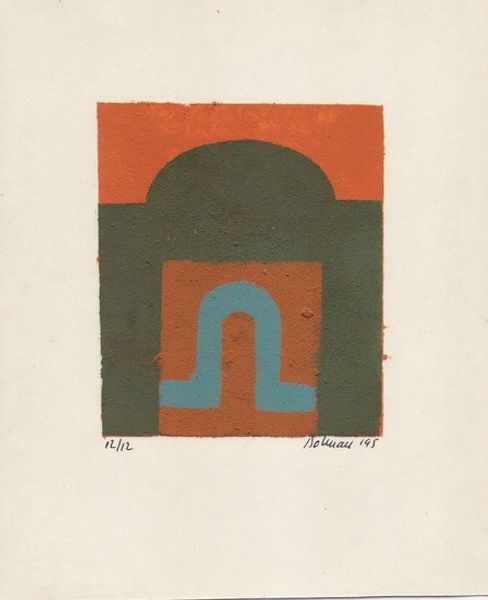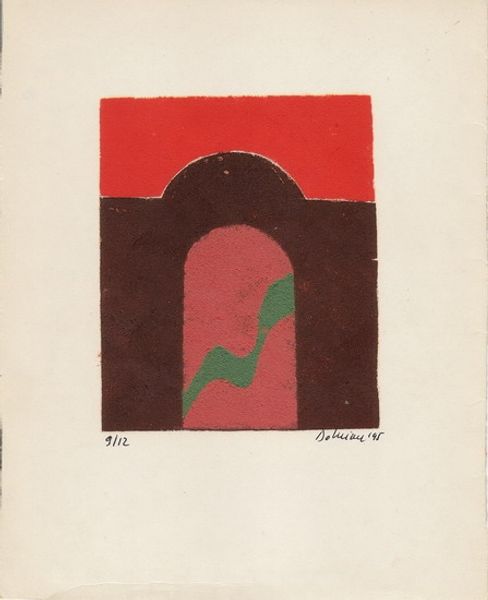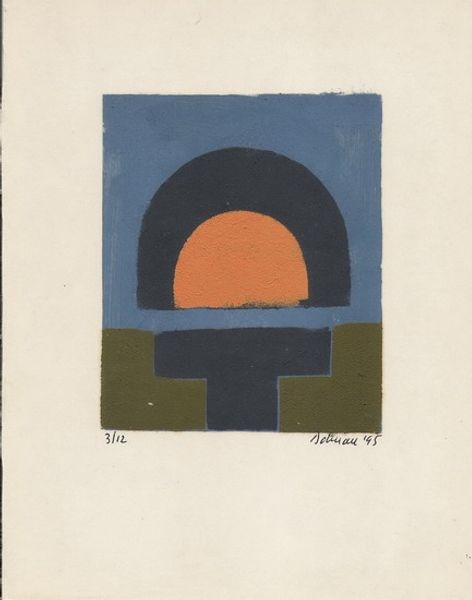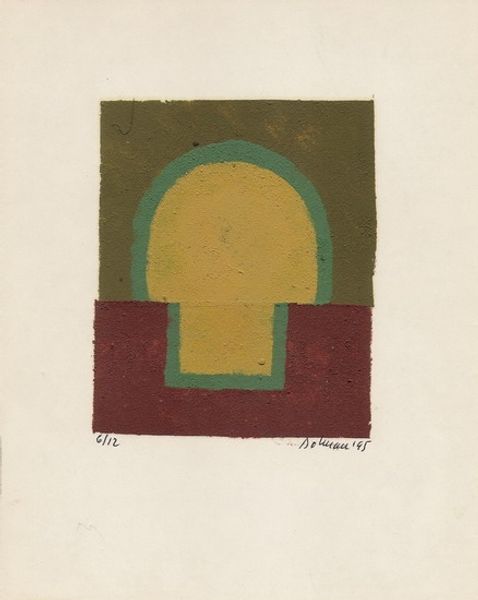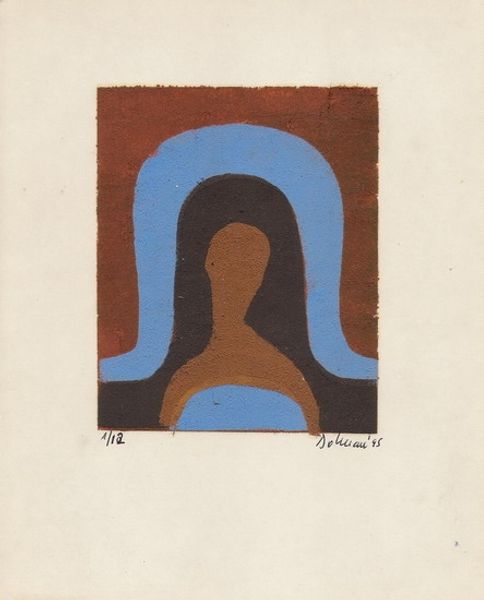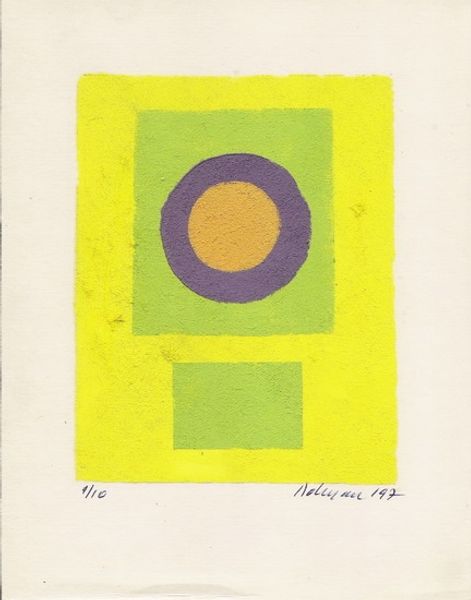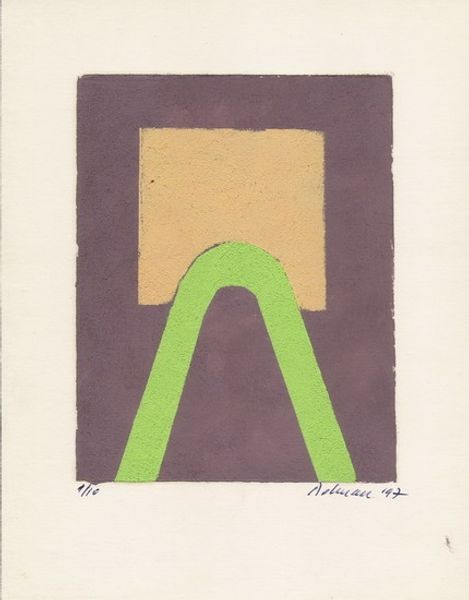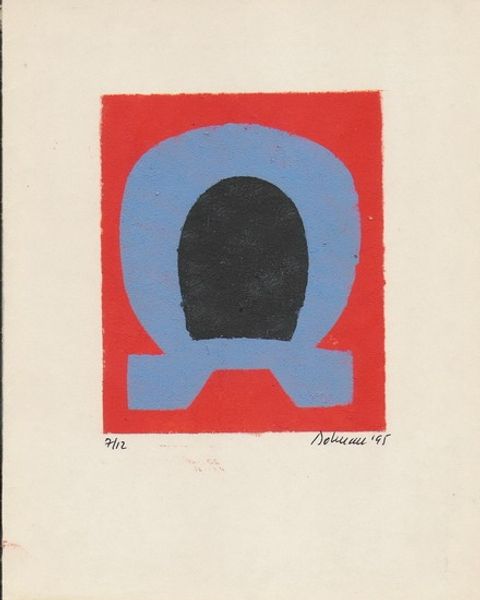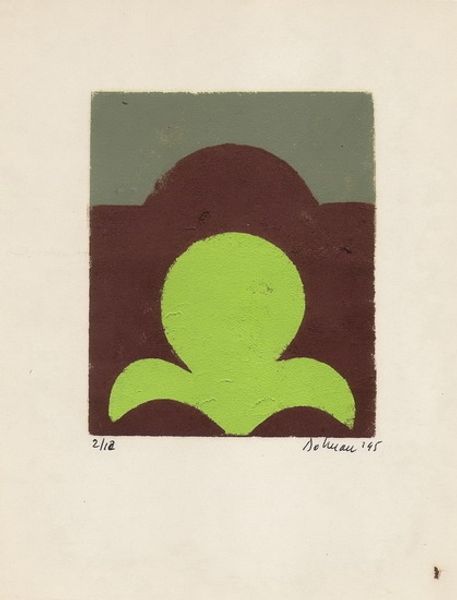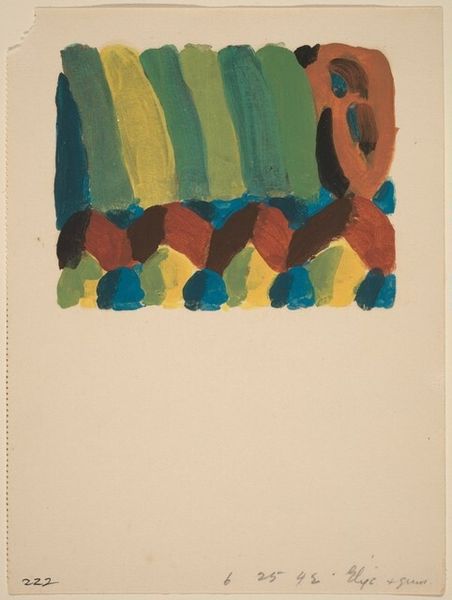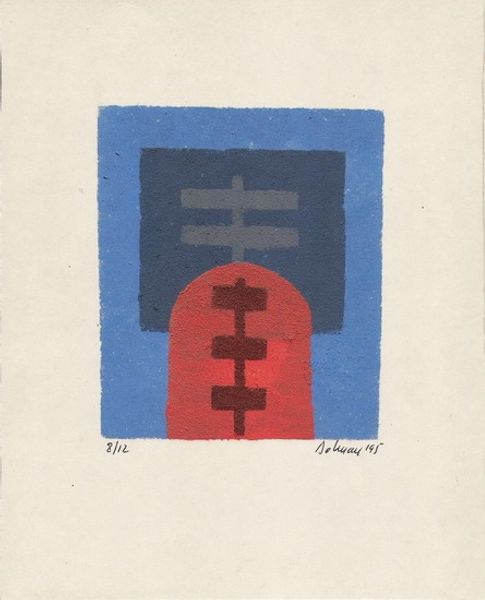
mixed-media, painting, acrylic-paint, paper
#
abstract-expressionism
#
mixed-media
#
painting
#
acrylic-paint
#
paper
#
geometric
#
geometric-abstraction
#
abstraction
#
watercolor
Copyright: Vasile Dobrian,Fair Use
Curator: Welcome. We're looking at Vasile Dobrian's mixed media piece, "With Smoke Footsteps I Got Closer to You" from the Archways series. What’s your immediate response to it? Editor: It's deceptively simple. The composition is grounding, like peering into a temple or natural shelter, yet it is somewhat eerie with its bold chromatic choices. The palette is muted with the dominance of brownish-umber and ochre. Curator: Indeed. The artist has presented us with an abstract geometric study, seemingly based on the arch form. Note how the shapes interact, creating a dynamic visual field. The artist uses color zoning and crisp edge definition as design elements, thus offering an intimate space for visual contemplation. Editor: Yes, but the “smoke footsteps” referenced in the title make me wonder if Dobrian is grappling with memory or traces of lost experience. That muted ochre makes me think of displacement, both physically and psychically. How might we situate this artwork within Dobrian's broader concerns around, perhaps, social or personal histories? Is there some allusion to place here, some site he returns to through these geometries? Curator: That’s certainly a valid interpretation, given the work's evocative title. However, from a formal standpoint, one might argue that the title serves more as an invitation to engage with the work's intrinsic qualities. It may evoke themes, but is essentially independent from social contexts and biographical accounts. It’s about pure form and how these components are combined: consider the relationships of geometric abstraction to a feeling. Editor: But by denying historical context, we risk perpetuating art-historical power structures that often ignore non-Western forms, histories, and traditions of artmaking. The “abstract” becomes a cultural void, and one should instead actively seek to enrich and further explore this art making and artist's journey by understanding them in conversation with society and identity. Curator: Perhaps. It seems the dialogue created, both visual and textual, asks us to bridge formalism with narrative associations and social consciousness. Editor: Absolutely. That friction is what keeps it so vibrant. Curator: An insightful observation. Thank you for joining me in this thought exercise. Editor: My pleasure, and an enriching conversation.
Comments
No comments
Be the first to comment and join the conversation on the ultimate creative platform.
